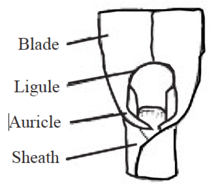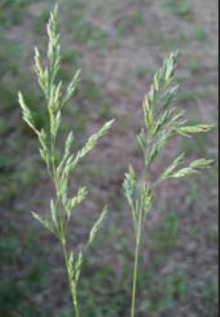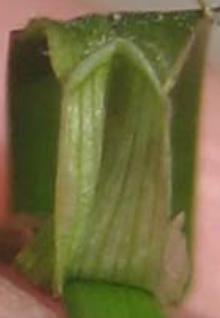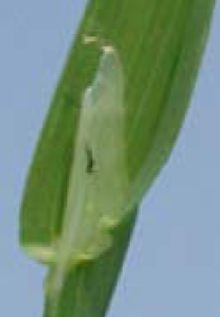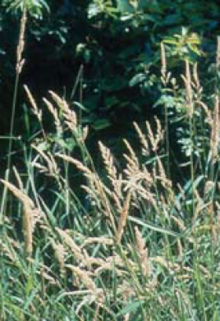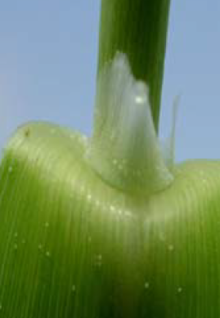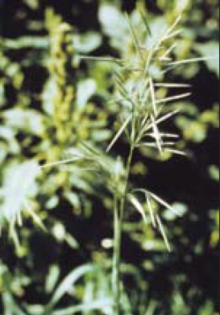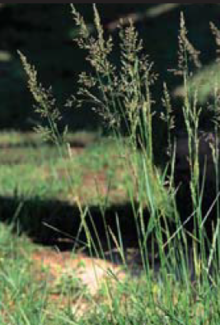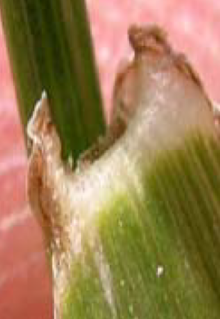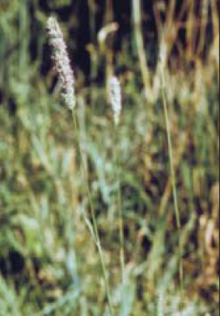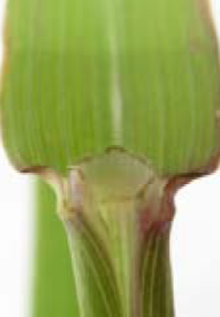Correctly identifying grasses is important for proper pasture management and to maximize yields and profits.
At first glance, most grasses in the vegetative stage look similar. However, each grass is unique and can be distinguished from other species.
Distinguishing characteristics
Most distinguishable characteristics are located in the collar region or area where the leaf blade and stem meet. In the collar region, you can find auricles, ligules and hairs (Figure 1).
Auricles are finger-shaped projections or appendages. They can be absent or present, large or small and may have hair.
A ligule is a thin appendage on the inner surface at the junction of the leaf blade and stem. Ligules can be membranous, hairy or absent. A membranous ligule resembles cellophane because it’s thin and translucent.
Other terminology to identify grasses:
Sheath: Lower part of leaf that surrounds or wraps around the stem.
Glabrous: Hairless.
Pubescent: Soft hairs.
Scabrous: Rough surface.
Blade: Expanded portion of leaf.
Vernation: Arrangement of leaves in an unopened bud or shoot.
Life cycle and growth habit
-
Perennial sod-forming.
Identifying characteristics
-
Auricles absent.
-
Membranous ligule (short).
-
Boat-shaped leaf tip.
-
Sheath split and glabrous.
Other identifying characteristics
-
Spreads by short rhizomes.
-
Panicle seed head.
-
Only vegetative regrowth (won’t produce seed heads).
Agronomic characteristics
-
Dense, low-growing grass.
-
Winter-hardy.
-
Somewhat tolerant of continuous grazing.
-
Poor heat and drought tolerance.
-
Lower yields.
Life cycle and growth habit
-
Perennial bunch grass.
Identifying characteristics
-
Auricles absent.
-
Membranous ligule (long and pointed).
-
Long, folded leaves.
-
Glabrous blades.
Other identifying characteristics
-
Prolific, tillering grass.
-
Panicle seed head.
-
Only vegetative regrowth (won’t produce seed heads).
Agronomic characteristics
-
Leafy, rapid regrowth.
-
Can be competitive with legumes.
-
Can have marginal winter hardiness.
Life cycle and growth habit
-
Perennial bunch grass.
Identifying characteristics
-
Auricles present.
-
Membranous ligule (short).
-
Shiny leaf bottom.
Other identifying characteristics
-
Spike seed head.
-
Only vegetative regrowth (won’t produce seed heads).
Agronomic characteristics
-
Rapid regrowth.
-
Leafy.
-
Can have marginal winter hardiness.
-
Limited heat and drought tolerance.
-
Can be competitive with other legumes.
Life cycle and growth habit
-
Perennial sod-forming.
Identifying characteristics
-
Auricles absent.
-
Membranous ligule (backside of ligules may be hairy).
-
Leaves tend to be wide and relatively short.
Other identifying characteristics
-
Tall stature grass.
-
Extensive rhizome that can be pink.
-
Compact panicle seed head.
-
Will produce multiple non-flowering stems during the growing season.
Agronomic characteristics
-
Tolerant of flooding and poorly drained soils.
-
Can be coarse and unpalatable when mature.
-
Slow to establish.
-
Plant low-alkaloid varieties.
Life cycle and growth habit
-
Perennial sod-forming.
Identifying characteristics
-
Auricles absent.
-
Membranous ligule (short).
-
Split sheath.
Other identifying characteristics
-
Panicle seed head.
-
Will produce multiple non-flowering stems during the growing season.
Agronomic characteristics
-
Winter-hardy.
-
Persists through heat and drought.
-
Can have uneven yield.
-
Slow regrowth.
Life cycle and growth habit
-
Perennial bunch grass.
Identifying characteristics
-
Auricles present (short and may have hair).
-
Membranous ligule (short).
-
Glabrous blades.
Other identifying characteristics
-
Doesn’t have reddish sheaths belowground.
-
Panicle seed head.
-
Only vegetative regrowth (won’t produce seed heads).
Agronomic characteristics
-
Adapted to a wide range of soil types.
-
Can have marginal winter hardiness.
-
Plant endophyte-free fescue.
Life cycle and growth habit
-
Perennial bunch grass.
Identifying characteristics
-
Auricles absent.
-
Membranous ligule (distinct notches on both sides).
-
Sheath edges overlapping.
Other identifying characteristics
-
Has corms (swollen basal portion of stem).
-
Spike seed head.
-
Flowers multiple times during the growing season.
Agronomic characteristics
-
Winter-hardy.
-
Broad window for quality.
-
Late-maturing.
-
Uneven yield.
-
Slow regrowth.
-
Poor heat and drought tolerance.
Reviewed in 2023


